YK-4-279
- CAS NO.:1037184-44-3
- Empirical Formula: C17H13Cl2NO4
- Molecular Weight: 366.2
- MDL number: MFCD18382120
- SAFETY DATA SHEET (SDS)
- Update Date: 2024-11-19 23:02:33
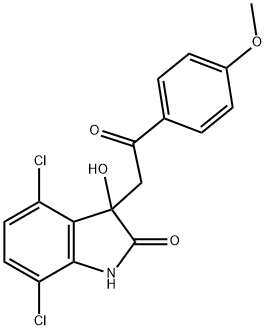
What is YK-4-279?
Chemical properties
A crystalline solid
The Uses of YK-4-279
An oncogenic fusion protein found in Ewing's sarcoma, a family of undifferentiated tumors which occur throughout the body. The binding of ES-FLI1 to RNA helicase A (RHA) promotes its oncogenic function. Inhibits protein-protein interactions between ES-FLI1 and RHA. At 10 μM, YK-4-279 blocks RHA binding to ES-FLI1 and induces apoptosis of a panel of Ewing's sarcoma tumor cell lines with IC50 values ranging from 0.5 to 2 μM.1 At 1.5 mg per dose, YK-4-279 reduces the growth of Ewing's sarcoma orthotopic xenografts in mice after treatment with the inhibitor for two weeks.
The Uses of YK-4-279
YK-4-279 is a small molecule inhibitor of EWS-FLI1 protein, and has been shown to disrupt the mitotic progression of neuroblastoma cells, and potentially other cancers.
Definition
ChEBI: 4,7-dichloro-3-hydroxy-3-[2-(4-methoxyphenyl)-2-oxoethyl]-1H-indol-2-one is an aromatic ketone.
Biological Activity
yk 4-279 is an inhibitor of rna helicase a (rha) binding to the oncogenic transciption factor ews-fli1.ews-fli1 is a disordered protein that precludes standard structure-based small-molecule inhibitor design. ews-fli1 binding to rna helicase a (rha) is important for its oncogenic function.
in vitro
esft cells treated with yk-4-279 showed a dissociation of ews-fli1 from rha by 10 mm, consistent with the kd value. the ews-fli1–transfected cells showed a dose-dependent decrease in promoter activity when treated for 18 h with 3 mm and 10 mm yk-4-279. yk-4-279 was relatively specific for esft cells as compared to the nontransformed hek293 cells [1].
in vivo
the tumor growth rate of yk-4-279–treated mice bearing chp-100 was lower than that in mice having pc3 prostate tumors. the cumulative data from five independent experiments with the esft xenografts (tc71 and chp-100) show a marked overall tumor reduction in the yk-4-279–treated mice. pathological analysis of mice treated with yk-4-279 did not show any signs of toxicity, except for sterile inflammatory lesions in the abdominal cavities of mice [1].
storage
Store at +4°C
References
[1] erkizan hv, kong y, merchant m, schlottmann s, barber-rotenberg js, yuan l, abaan od, chou th, dakshanamurthy s, brown ml, uren a, toretsky ja. a small molecule blocking oncogenic protein ews-fli1 interaction with rna helicase a inhibits growth of ewing's sarcoma. nat med. 2009;15(7):750-6.
Properties of YK-4-279
| Melting point: | 149-151℃ |
| Boiling point: | 608.9±55.0 °C(Predicted) |
| Density | 1.456 |
| storage temp. | Store at -20° C. |
| solubility | insoluble in H2O; ≥16.35 mg/mL in DMSO; ≥24.25 mg/mL in EtOH with ultrasonic |
| form | Powder |
| pka | 10.43±0.20(Predicted) |
| color | White to off-white |
Safety information for YK-4-279
| Signal word | Warning |
| Pictogram(s) |
 Exclamation Mark Irritant GHS07 |
| GHS Hazard Statements |
H302:Acute toxicity,oral H315:Skin corrosion/irritation H319:Serious eye damage/eye irritation H335:Specific target organ toxicity, single exposure;Respiratory tract irritation |
| Precautionary Statement Codes |
P261:Avoid breathing dust/fume/gas/mist/vapours/spray. P264:Wash hands thoroughly after handling. P264:Wash skin thouroughly after handling. P270:Do not eat, drink or smoke when using this product. P271:Use only outdoors or in a well-ventilated area. P280:Wear protective gloves/protective clothing/eye protection/face protection. P330:Rinse mouth. P362:Take off contaminated clothing and wash before reuse. P301+P312:IF SWALLOWED: call a POISON CENTER or doctor/physician IF you feel unwell. P302+P352:IF ON SKIN: wash with plenty of soap and water. P304+P340:IF INHALED: Remove victim to fresh air and Keep at rest in a position comfortable for breathing. P305+P351+P338:IF IN EYES: Rinse cautiously with water for several minutes. Remove contact lenses, if present and easy to do. Continuerinsing. P332+P313:IF SKIN irritation occurs: Get medical advice/attention. P337+P313:IF eye irritation persists: Get medical advice/attention. P405:Store locked up. P403+P233:Store in a well-ventilated place. Keep container tightly closed. P501:Dispose of contents/container to..… |
Computed Descriptors for YK-4-279
New Products
4-AMINO-TETRAHYDRO-PYRAN-4-CARBOXYLIC ACID HCL 4-(Dimethylamino)tetrahydro-2H-pyran-4-carbonitrile 4-AMINO-TETRAHYDRO-PYRAN-4-CARBOXYLIC ACID 4-Aminotetrahydropyran-4-carbonitrile Hydrochloride (R)-3-Aminobutanenitrile Hydrochloride 5-Bromo-2-nitropyridine Nimesulide BP Aceclofenac IP/BP/EP Diclofenac Sodium IP/BP/EP/USP Mefenamic Acid IP/BP/EP/USP Ornidazole IP Diclofenac Potassium 3-Bromopyrazole (3aR,4R,5R,6aS)-hexahydro-5-Triethyl silyloxy-4-((E)-3-oxo-5-phenylpent-1- enyl)cyclopenta[b]furan-2-one. 1-Chlorocarbonyl-4-piperidinopiperidine 1-Bromo-4-phenyl-2-Butanone 4-Amino-2-fluoro-N-methylbenzamide 1,1'-Carbonyldiimidazole SODIUM AAS SOLUTION ZINC AAS SOLUTION BUFFER SOLUTION PH 10.0(BORATE) GOOCH CRUCIBLE SINTERED AQUANIL 5 BERYLLIUM AAS SOLUTIONRelated products of tetrahydrofuran

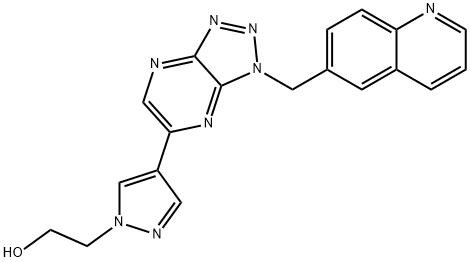
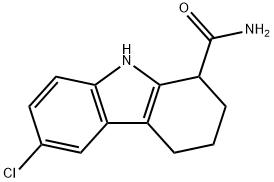

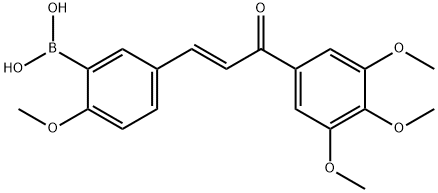
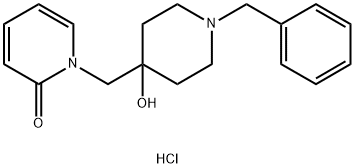
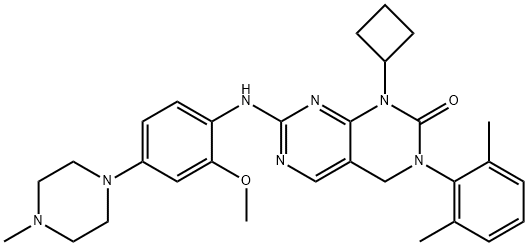
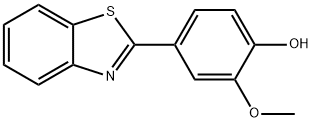
You may like
-
 YK-4-279 >95% CAS 1037184-44-3View Details
YK-4-279 >95% CAS 1037184-44-3View Details
1037184-44-3 -
![Dimethyl [2-oxo-3-[3-(trifluoromethyl)phenoxy]propyl]phosphonate 99%](https://img.chemicalbook.in//Content/image/CP5.jpg) Dimethyl [2-oxo-3-[3-(trifluoromethyl)phenoxy]propyl]phosphonate 99%View Details
Dimethyl [2-oxo-3-[3-(trifluoromethyl)phenoxy]propyl]phosphonate 99%View Details
54094-19-8 -
 85-81-4 99%View Details
85-81-4 99%View Details
85-81-4 -
![208111-98-2 (3aR,4R,5R,6aS)-5-(Benzoyloxy)hexahydro-4-[(1E)-3-oxo-4-[3-(trifluoromethyl)phenoxy]-1-buten- 1-yl]-2H-cyclopenta[b]furan-2-one 99%](https://img.chemicalbook.in//Content/image/CP5.jpg) 208111-98-2 (3aR,4R,5R,6aS)-5-(Benzoyloxy)hexahydro-4-[(1E)-3-oxo-4-[3-(trifluoromethyl)phenoxy]-1-buten- 1-yl]-2H-cyclopenta[b]furan-2-one 99%View Details
208111-98-2 (3aR,4R,5R,6aS)-5-(Benzoyloxy)hexahydro-4-[(1E)-3-oxo-4-[3-(trifluoromethyl)phenoxy]-1-buten- 1-yl]-2H-cyclopenta[b]furan-2-one 99%View Details
208111-98-2 -
 2033-24-1 99%View Details
2033-24-1 99%View Details
2033-24-1 -
 Meldrums acid 2033-24-1 99%View Details
Meldrums acid 2033-24-1 99%View Details
2033-24-1 -
 Cyaclopentane carboxylic acid 99%View Details
Cyaclopentane carboxylic acid 99%View Details
3400-45-1 -
 2-Aminopyridine 504-29-0 99%View Details
2-Aminopyridine 504-29-0 99%View Details
504-29-0